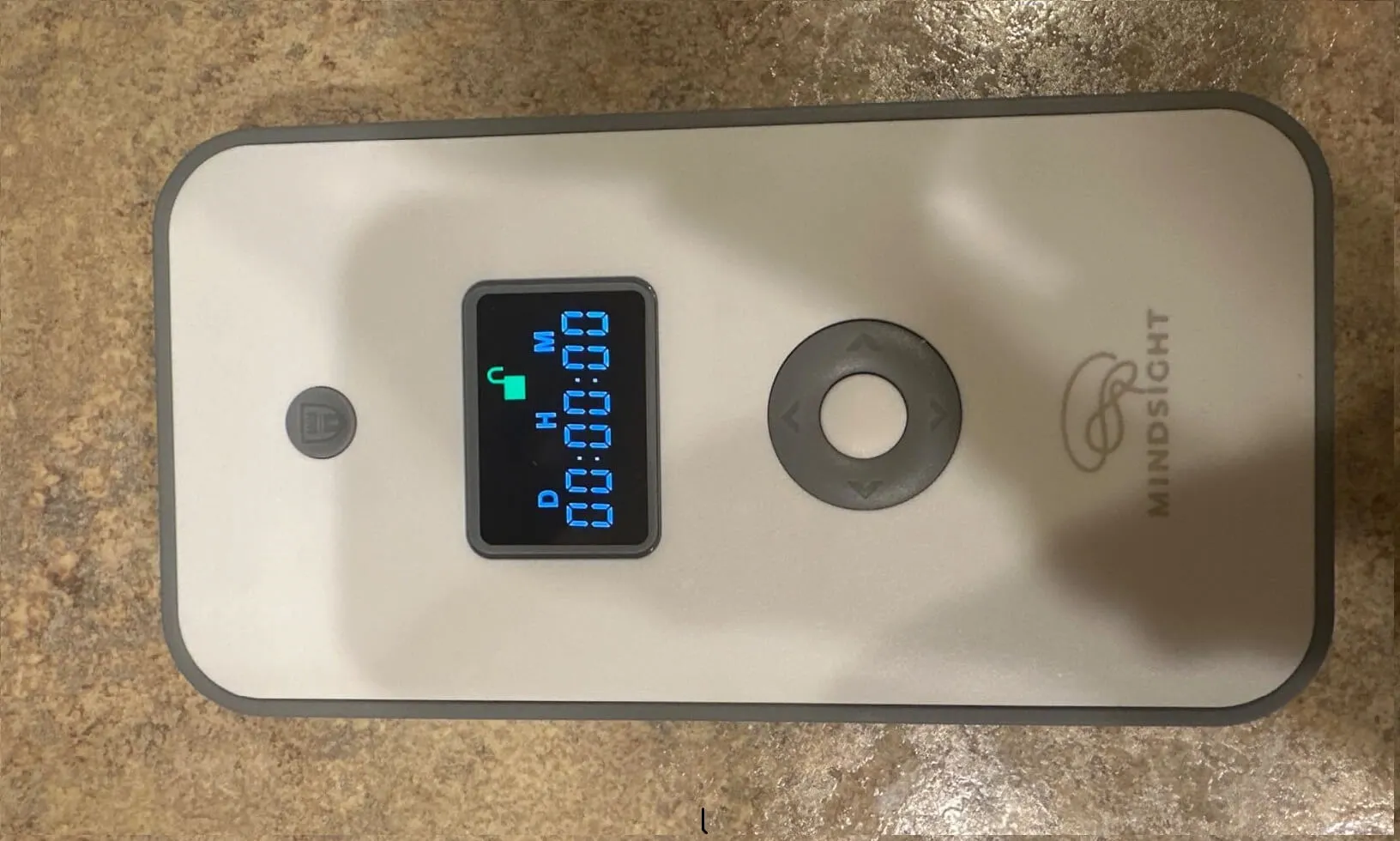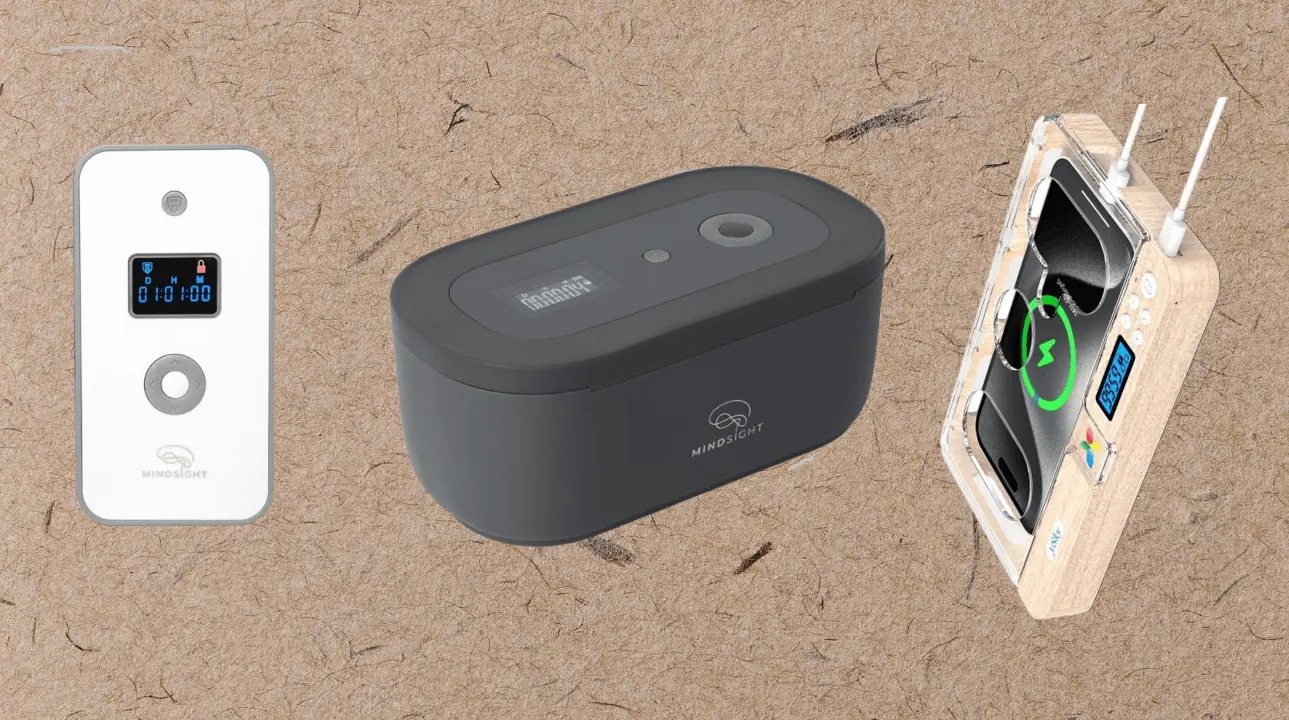
Let’s be honest: you’ve probably tried every screen time app on the market. You’ve set limits, turned on “Do Not Disturb,” and maybe even put your phone in another room. Yet here you are, still scrolling mindlessly when you should be working, studying, or spending quality time with family.
Here’s the thing about willpower it’s a finite resource. When your phone is just a swipe away, even the strongest intentions can crumble.
That’s where phone lock boxes come in. They aren’t just another digital solution you can easily bypass. They create a real, physical barrier between you and your biggest distraction. Think of it as putting your phone in timeout, whether it likes it or not.
What is a Phone Lock Box?
A phone lock box is a container designed to lock your phone away for a set period. You can set timers ranging from a few minutes to several days, place your device inside, and the box physically locks itself until the timer hits zero.

The basic principle is straightforward. If you’re curious about the specific timers and locking mechanisms involved, you can dive deeper into how a phone lock box works, but here’s the general process:
- Set Your Timer: Decide how long you want to be phone-free.
- Place Your Phone Inside: Some boxes can fit multiple devices.
- Lock the Box: The mechanism engages, often automatically.
- Wait It Out: There are no easy escape routes or digital workarounds.
The key difference from apps? There’s no “override” button to tap when temptation strikes. It’s a true commitment device that forces you to stick to your intentions.
Main Types of Phone Lock Boxes
Not all phone lock boxes are created equal. Here are the main categories you’ll find:

Timed Lock Boxes
The most common type. Set a timer, and they stay locked until time’s up. Some offer limited emergency overrides; others don’t budge no matter what.
Combination Lock Boxes
These use a simple 3-digit code instead of a timer. They’re less about forced waiting and more about creating a conscious barrier, relying on your discipline to not open them.
Signal-Blocking Boxes
Premium options like the Yondr Home Tray are designed to create a complete “digital dead zone” by blocking all cellular, Wi-Fi, and Bluetooth signals, not just locking the phone away.
Basic vs. Feature-Rich
Entry-level models just lock and unlock. Advanced versions have charging ports so your phone can power up while locked away and are large enough for multiple phones or other items like game controllers.
The Pros: Why a Phone Lock Box Works
- Creates Real Commitment: Unlike apps you can disable, a physical timer forces you to honor your original intention.
- Removes Visual Triggers: “Out of sight, out of mind” is a powerful principle. An opaque box is especially effective at removing the glowing temptation from your desk.
- Builds Better Habits: Every time you successfully wait out the timer, you’re training your brain that you can survive without constant phone access. It’s like a workout for your attention span.
- A Simple Family Solution: Phone lock boxes provide a neutral, secure place for family devices. The box becomes the “bad guy,” not you, ending battles over screen time.
- Emergency Features: Many models include limited emergency unlocks or ways to answer urgent calls, so you’re not completely cut off.
- Charging While Locked: Quality models let you keep your phone charging, so you don’t return to a dead battery.
The Cons: What to Consider Before Buying
- True Emergency Access: What if you need your phone now? While some boxes have emergency features, they are often limited and can wear out over time. This is the biggest trade-off.
- Battery Dependence: If the lock box’s own battery dies while your phone is inside, you could be stuck until you find a backup key or a way to recharge it.
- Size Limitations: Most boxes are designed for standard phones. If you have a large tablet or an oversized case, it might not fit. Always check dimensions carefully.
- Cost Factor: A quality phone lock box can cost anywhere from $30 to $200+, a bigger investment than a free app.
- Durability Concerns: These are behavioral tools, not high-security safes. A determined person can break into most models, as they are primarily a deterrent.
- Confusing Instructions: Some users report that certain models come with unclear instructions or require frustrating assembly.
Phone Lock Box vs. Regular Lock Box: The Key Differences
A phone lock box isn’t just a glorified container. Its design is rooted in behavioral psychology, not security.
| Feature | Phone Lock Box | Regular Lock Box |
|---|---|---|
| Primary Purpose | Behavior modification (to keep you out). | Security (to keep others out). |
| Locking Mechanism | Sophisticated electronic timer. | Key, combination, or simple latch. |
| Design | Sized for phones, with charging ports. | General purpose storage. |
| Emergency Access | Often includes limited override features. | None. Breaking in is the only option. |
| Material | Can be transparent to serve as a reminder. | Focused on durability and security. |
| Security Level | Low. Designed to deter, not prevent theft. | High. Designed to be difficult to break. |
Who Should (and Shouldn’t) Get a Phone Lock Box?
A Great Choice For:
- Chronic scrollers who lose hours to social media.
- Students who need to focus during study sessions.
- Parents navigating screen time battles with their kids.
- Anyone who finds digital wellness apps too easy to bypass.
Maybe Skip If:
- Your job requires constant, on-call phone access.
- You have a medical condition that requires immediate communication.
- You are already good at self-regulating your phone use.
- The thought of being separated from your phone causes genuine panic. (Consider starting with shorter, non-locked intervals first).
How to Choose the Right One
Choosing the right phone lock box comes down to your personal needs and goals. While we have a complete guide on how to choose a phone lock box that covers every detail, the key factors to consider are:

- Locking Style: Do you need a “fortress mode” with no overrides, or a gentler approach with emergency access? Be honest about your willpower.
- Size: Will you be locking up just your phone, or the whole family’s devices? Measure everything, including cases, before you buy.
- Transparency: Do you want to see your phone (as a reminder of your commitment) or have it completely out of sight?
- Features: Are charging slots, signal blocking, or multiple timer modes must-haves for you?
Once you know what features matter most, you can find the perfect model. To see our top-rated picks for every need, check out our guide to The 9 Best Phone Lock Box Timers.
The Bottom Line: Is It Worth It?
If you’re serious about reducing your phone usage and apps haven’t worked, then yes, a phone lock box is absolutely worth trying.
It won’t magically solve a deep-seated phone addiction, but it’s one of the most effective tools for creating space between impulse and action. Think of it as training wheels for better habits. Eventually, you might not need it, but while you’re building those mental muscles, a physical barrier can be the difference between intention and action.
When that timer hits zero, you’ve proven to yourself that you can thrive without constant digital stimulation. In our hyperconnected world, that’s a powerful feeling.

